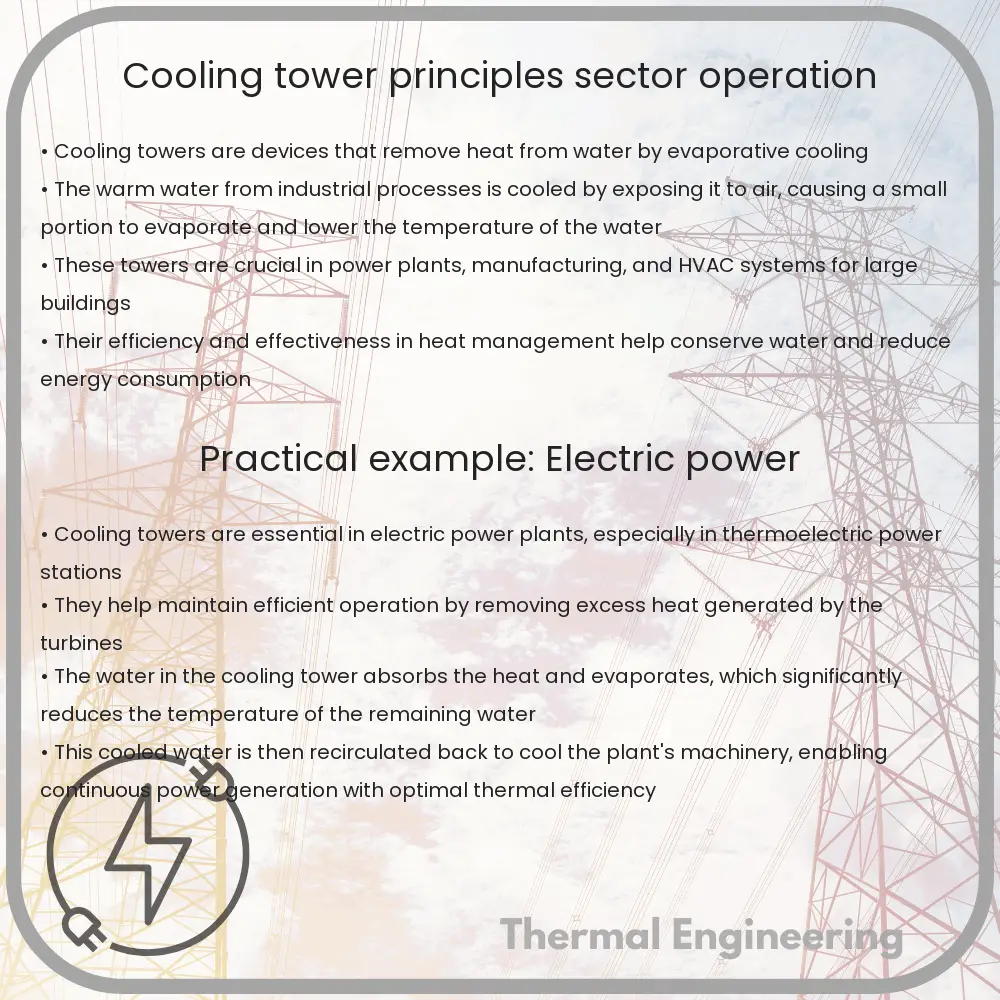Explore the principles, types, and sector-specific applications of cooling towers, critical for industrial temperature regulation.

Understanding Cooling Towers: Principles and Sector Operations
Cooling towers are essential components in a variety of industrial processes where they are utilized to dissipate heat into the atmosphere. They are commonly found in power plants, manufacturing facilities, and HVAC systems for large buildings. This article will explore the basic principles of cooling tower operation and how they are implemented in different sectors.
The Basic Principle of Cooling Towers
Cooling towers operate on the principle of heat rejection. They remove waste heat from a process or building and release it into the atmosphere primarily through the process of evaporation. A cooling tower receives warm water from the process it is cooling, which gets cooled down as it passes through the tower and is sent back to the process. This circulation cycle helps in maintaining a balanced temperature that is crucial for industrial processes and effective air conditioning.
Types of Cooling Towers
- Mechanical Draft Towers: These towers use power-driven fans to force or draw air through the tower. They are further divided into forced draft and induced draft cooling towers.
- Natural Draft Towers: Utilize the natural buoyancy of hot air to facilitate airflow through the cooling tower, thus eliminating the need for mechanical fans. These towers are typically much larger in size and commonly used in power generation sectors.
Key Components of a Cooling Tower
- Water Basins: Collect the cooled water at the bottom of the tower to be recirculated back into the system.
- Fill Material: Increases the surface area for heat transfer between the air and the water. The fill can be either splash type, which breaks the water and promotes air interaction, or film type, where water spreads into a thin film.
- Distribution Systems: These systems evenly distribute hot water over the fill media to optimize cooling.
- Fans: In mechanical draft towers, fans are used to move air through the tower.
- Drift Eliminators: Reduce the amount of water droplets and vapor carried away by the process air.
How Cooling Towers Work
The operation of a cooling tower starts when warm water from the process (often the return from a heating or cooling system) is piped into the tower. Once inside, the water is distributed over the fill material, facilitating heat transfer through direct contact or evaporation. As the water travels down the fill, it cools down through evaporation, which removes the heat from the water. The cooled water is then collected in basins at the bottom of the tower and recirculated into the process. Simultaneously, air is either pulled or pushed by fans (in mechanical draft towers) or flows naturally (in natural draft towers) through the fill to further facilitate the cooling through convective heat transfer.
Cooling Tower Efficiency
The efficiency of a cooling tower depends on various factors such as the wet-bulb temperature, the type and condition of the fill, air and water flow rates, and overall operational maintenance. By optimizing these factors, the efficiency of cooling towers can substantially increase, leading to better temperature regulation and reduced energy consumption.
Sector-Specific Applications
- Power Generation: Cooling towers in power plants help in maintaining the low temperature of the condensing steam.
- Industrial Processing: Many manufacturing processes need controlled temperatures to ensure product quality, and cooling towers provide this feature efficiently.
- HVAC Systems: Major commercial buildings use cooling towers to dissipate heat from the building’s air conditioning system, maintaining a comfortable indoor environment.
In conclusion, cooling towers are vital for numerous applications across different sectors, significantly impacting operational efficiencies and environmental control. By understanding the principles on which these towers operate, industries can tailor their use to meet specific cooling needs effectively.